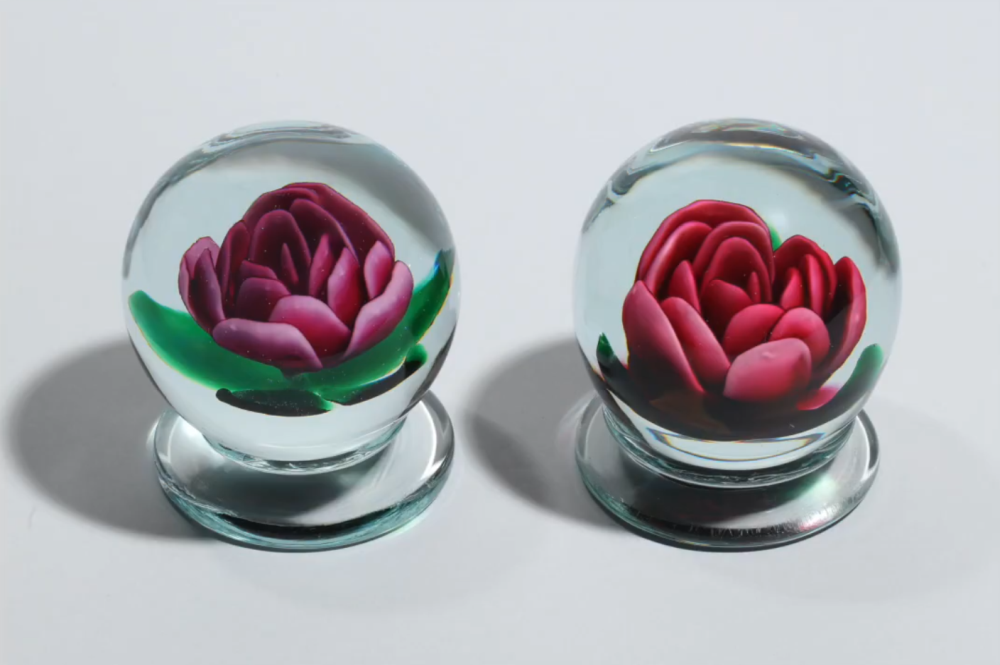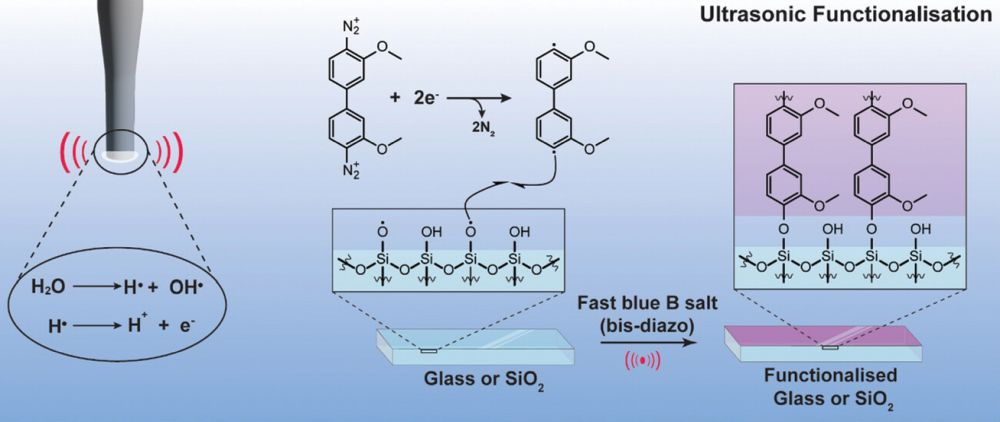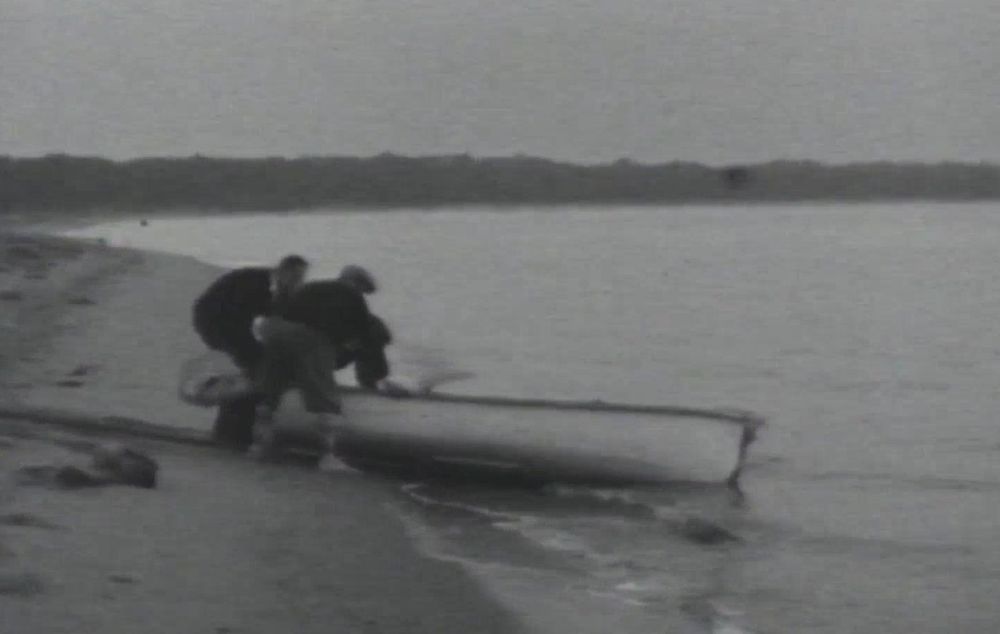
[Image above] Example of glass distillation flasks at the National Isotope Hydrology Lab. Credit: IWMI Flickr Photos, Flickr (CC BY-NC-ND 2.0)
When Neil Bartlett synthesized the first noble gas compound (xenon hexafluoroplatinate) in 1962, his discovery rocked the chemistry world by showing that, contrary to popular belief, noble gases are not completely inert. But before he could make this game-changing discovery (unfortunately for him, alone in his lab on a Friday night!), Bartlett first needed to create a specialized glass container in which to safely conduct the revolutionary reaction.
This story is just one example of the many historically important discoveries that were made possible thanks to glass implements. Prisms, vacuum tubes, lenses, and microscope slides are just a few of the many specialized glass tools that scientists use to support their innovative research.
The creation of intricately designed glass instruments for research and production began, as so much of science did, with the alchemists. The round alembic for distillation, for example, was a technological breakthrough that we should all take time to appreciate. Although it began as a perfume production method, it now finds use in other industries requiring distillation, including chemical, pharmaceutical, disinfectant, and liquor manufacturing.
The field of scientific glassmaking really took off in the late 19th century with the development of borosilicate glass. The profession expanded further after World War II when higher education became widely accessible, requiring expanded classroom laboratory space and driving research in new directions.
Unfortunately, starting in the 1970s, the availability of mass-produced precision glassware led to a decline in employment opportunities for scientific glassmakers. But the need for highly skilled scientific glassmakers endures because, as Bartlett showed, some discoveries require the design of unique instruments that are not or cannot be mass produced.
Scientific glassmaking skills
Many glass vessels required for food production (canning jars), beverage bottling (milk or wine bottles), home use (drinking glasses), and common laboratory experiments (beakers and test tubes) feature simple shapes, making mass production easy. However, some experiments require complex glass setups, which is where the expertise of scientific glassmakers comes in.
Like artistic glassmakers, scientific glassmakers use shaping and forming to produce the desired outcome. However, unlike artistic glasses, scientific glass instruments will be exposed to high temperatures, corrosive substances, and other challenging environments. For this reason, most scientific glassware is made from borosilicate glass—which has low thermal expansion and high chemical durability—rather than soda-lime glass, which is the standard for most glass vessels.
There are rigorous standards for scientific glasses to which artistic glasses are not subject. For example, the American Society for Testing and Materials (ASTM) standard E287 specifies the dimensions and tolerances for precision and general-purpose burettes. The International Organization for Standardization (ISO) has requirements for borosilicate glass composition and volumetric glassware.
In addition to these standards, a scientific glassmaker’s skillset is further extended by the need to read and interpret schematic diagrams and chemical reactions on at least a cursory level to know what is expected of the glass implement. By far the largest group of potential employers for scientific glassmakers are large research laboratories, such as those at universities or chemical companies. Those employers require their glassmakers to have a strong background in science, which differentiates scientific glassmakers from their artistic colleagues.
Despite these differences, both artistic and scientific glassmakers share a flair for creativity, blurring the lines between art and science.
Becoming a scientific glassmaker
Degree programs in scientific glassmaking are rare, and many scientific glassmakers learn their craft through an apprenticeship instead. However, there is one scientific glassmaking degree program in the United States at Salem Community College in Carneys Point, N.J.
The Salem program began in 1959 and has trained hundreds of scientific glassmakers. The glassmakers who graduate are prepared to make whatever specialized equipment the labs they serve will need. Because of the scarcity of their skillset, it isn’t uncommon for a glassmaker to be shared across several universities.
I had the pleasure of speaking with Annalee Pickett, an alumna of the Salem Community College degree program and now scientific glassmaker for the University of Georgia. She is also the current president of the American Scientific Glassblowers Society (ASGS).
Pickett came to the profession through an early interest in artistic glassmaking. She was unaware that there were industrial and academic jobs for glassmakers until she was in high school, when a fateful encounter with the University of Illinois’s scientific glassmaker set Pickett on her career path. The assistant in the shop had gone to Salem Community College, so she had some knowledge of the program before heading halfway across the country to enroll.
The program at Salem is experiential, and in addition to the practical glassmaking lessons, students take chemistry and organic chemistry so that they can more easily support the researchers with whom they will work. In her role at the University of Georgia, Pickett stays busy making and repairing laboratory equipment, as well as teaching a class in glassmaking each year and her role as the ASGS president.
When I spoke to her, Pickett’s enthusiasm for the profession shone through. She also pointed out that the field of scientific glassmaking is diverse and hard to define.
“What do you call the person that makes lenses for a telescope or optic laser? It’s glass for science, yet it’s very different from anything I do. Sometimes a grad student makes their own ampules; are they a scientific glassblower? A true definition is almost as amorphous as glass itself,” she says.
Scientific glassmakers in action
Today, there are approximately 650 members of the ASGS, but the fruits of their labors don’t often get recognition from the general public. Because the nature of scientific glassmaking is so visual and tactile, however, it wouldn’t be fully accurate to simply write about this unique profession. So, the following is a list of videos showcasing the work of various scientific glassmakers around the world. Enjoy!
- Ryan Tate from the University of Pittsburgh talks about how he supports research at Pitt, Carnegie Mellon University, and Duquesne University.
- Jeanne Bertonazzi at Texas Tech University talks about the personal connection she has with her brother, who was the glassmaker there before her.
- Mark Toonen at the University of Calgary in Canada, explains how watching his father work as the scientific glassmaker at the University of Alberta was his introduction to the profession.
- Terri Adams, at the University of Oxford in England describes how to seal glass to metal to form electrodes.
- In an episode of QED with Dr. B, a longer form interview with Tim Henthorne at the Ohio State University takes a wider view of scientific glassmaking and its importance to research.
- Here’s an example of commercial production of laboratory glassware (specifically a condenser) in the United Kingdom.
- For a bit of history, a 1951 episode of The Johns Hopkins Science Review venerates the work of scientific glassmakers.
Author
Becky Stewart
CTT Categories
- Glass


